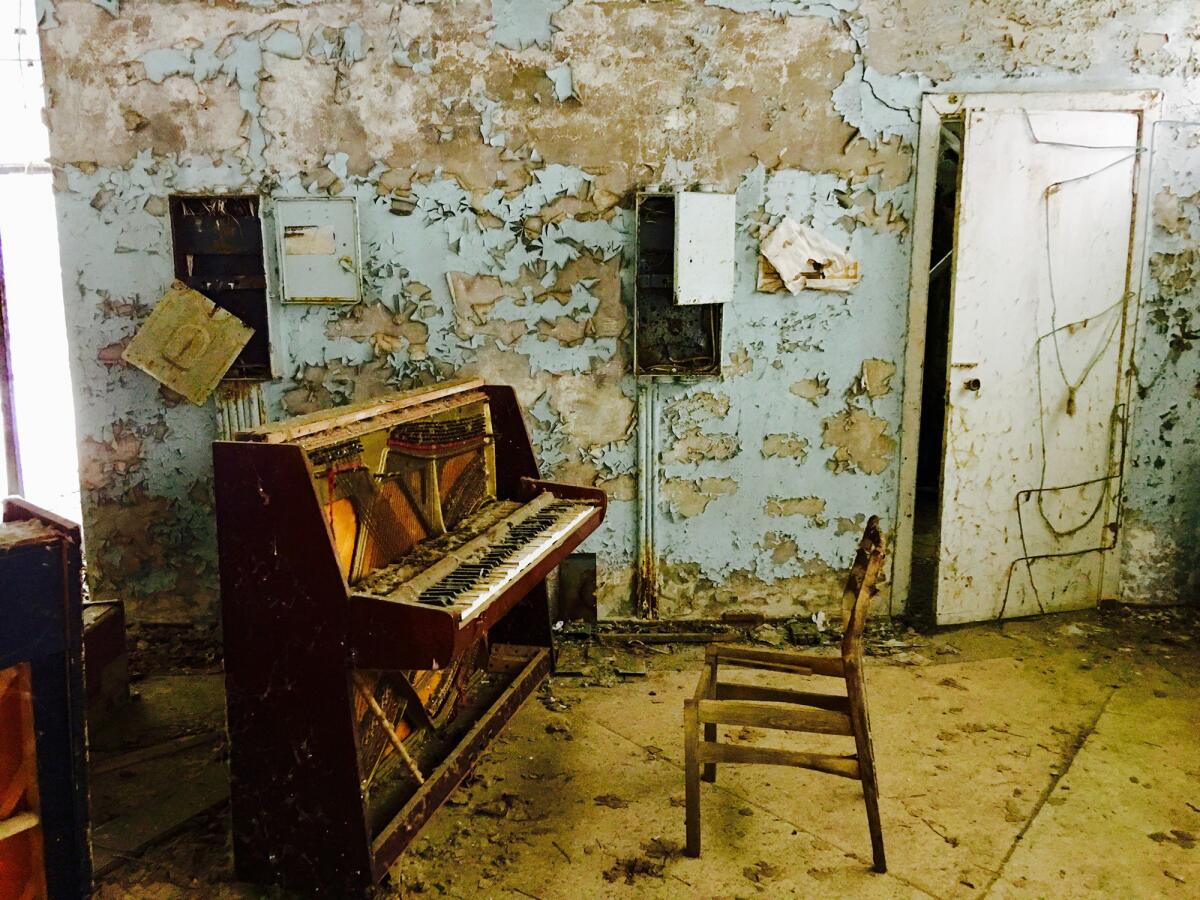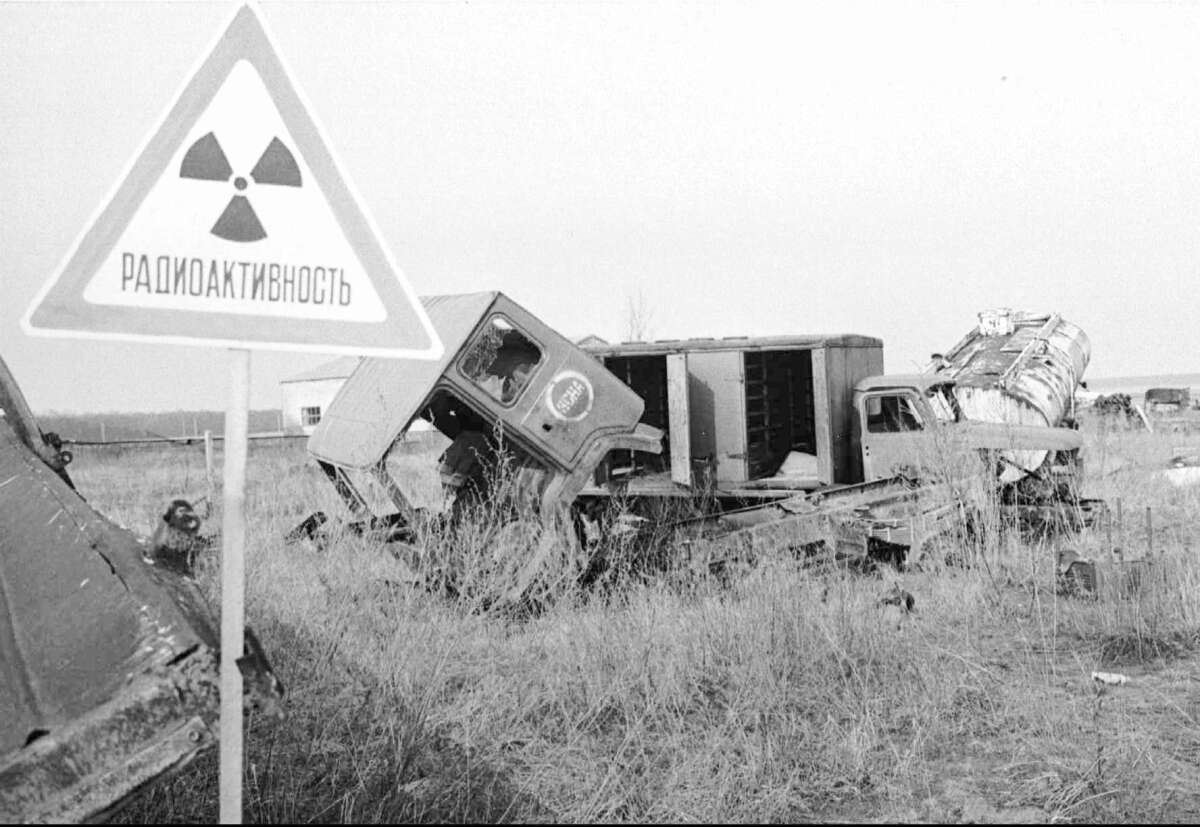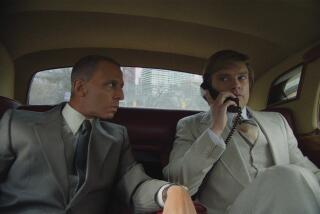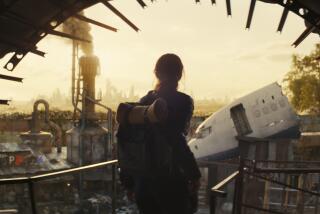‘Midnight in Chernobyl’ reveals the nuclear disaster’s untold story

- Share via
The explosion on April 26, 1986, at the V.I. Lenin, or Chernobyl, Atomic Energy Station in what was then the Ukrainian Soviet Socialist Republic is thought to have “vaporized” one worker on the spot. Another 30, drenched in fatal doses of radiation, died gruesome, lingering deaths. As of 2005, as many as 5,000 additional cancer deaths were projected locally — among 25,000 extra cancer cases Europe-wide. Contamination rendered 1,838-plus square miles “uninhabitable.” And a spectral column of radioactive gases escaped into the atmosphere, setting people on edge from Stockholm to San Francisco. It was the worst nuclear accident in history and could have been far worse.
It also helped precipitate the demise of the Soviet Union. And this — the dissolution of the geopolitical entity in which it occurred — has contributed to its effacement: buried under the accretions of history like the radioactive debris smothered by “absorbents” during its cleanup. Thirty-three years later, what happened exactly at Chernobyl? This question is now the subject of a boomlet of interest in the English-speaking world. Last year, Harvard historian Serhii Plokhy published an acclaimed account of the accident; next month HBO will air a miniseries dramatizing it. And in “Midnight in Chernobyl” Anglo-American journalist Adam Higginbotham gives it the long-form narrative treatment. The result is a riveting, deeply reported reconstruction of a disaster rooted in the odd Ponzi-like unreality of late-period Marxism-Leninism, its culture of morbid secrecy and the arrogance of its technocratic elite. Shot through with Soviet machismo, Stakhanovite feats of industry and improvisation in the face of seemingly overwhelming odds, it culminates in a battle to prevent disaster from escalating into apocalypse that evokes the Red Army halting Hitler’s Wehrmacht at Stalingrad.
Higginbotham situates Chernobyl in the crucial context of the mid-1980s USSR. Nuclear power had been anointed a flagship technology — testament to Soviet industrial prowess and a means for supplying electricity to the masses. Reflecting this exalted status, Chernobyl workers were housed in a purpose-built “atomgrad,” Pripyat, that with a sylvan setting and ample supplies (“more than five different types of sausage”) was a cut above the motherland’s otherwise spartan workers’ quarters. On completion of an expansion in 1988, Chernobyl was slated to become the “largest nuclear power complex on earth.”
But this was also a state five years from implosion and Chernobyl bore its pathologies in spades. Besides the dedicated priesthood of technologists attending to its reactors, the plant was freighted with idle workers guaranteed jobs under the full employment mandate plus Communist Party hacks. Glasnost and perestroika were stirring following the accession a year earlier of Mikhail Gorbachev as head of state, but the USSR still reeled from the gerontocracy that preceded him, during which Kremlin edicts became unmoored from reality. “[T]he categorical dictates of Soviet bureaucracy” were one thing, but Chernobyl dwelled in the “gray netherworld of Soviet reality,” cutting corners, skimping on safety, deferring maintenance — whatever was “expedient” to meet goals. And then there was the technology — “capricious” and “unforgiving.”
All this placed its human operators under crushing pressure. On the fateful night shift, performing a critical test, they were further beset by interpersonal dysfunction: an overbearing supervisor with imperfect technical know-how abetted by a culture of deference; cowed underlings; a rookie at the controls; and a concatenation of poor decisions.

Higginbotham’s description of what ensued next imprints itself on the mind. Moments before blowing, the distressed reactor emits “a rising moan, the protest of a giant beast in anguish.” Afterward, the spectacle of “beautiful phosphorescence” signals “radioactive ionization of air.” Workers gawking at a “molten crater … the blazing throat of the reactor,” are lethally “irradiated” where they stand. Another is temporarily struck blind by radiation.
More than 32 hours elapse before Pripyat is evacuated. During this time, the KGB having cut the phone lines, its 50,000-plus residents are in the dark about the gravity of the accident. An indicator of its ambient radiation though: a resident working on his tan observes that “his skin gave off a burning smell” and comes over “oddly excited.”
But there’s no covering up what has gone down. Two days later Sweden detects elevated radiation and international alarm compels the Kremlin to come clean (not entirely; it conceals the extent of local fallout).
Thus, Chernobyl serves in part as a forcing-house for opening up Soviet society. But it’s also a throwback to an earlier heroic age. The cleanup becomes a point of pride; a project to restore Soviet prestige dinged by the catastrophic failure of a technology in which it professed global leadership. That’s not all that’s at stake. Authorities fear a meltdown of radioactive matter that could leach into the water table or trigger another explosion. Worst case: Much of Europe becomes a nuclear wasteland.

Mounted on a war footing, the quest to avert this “doomsday scenario” and, later, “entomb” the reactor yields high drama. When a comrade balks at a perilous mission to drain water from under the stricken reactor, civil defense Capt. Piotr Zborovsky — who they call Moose — snarls, “Don’t bring out the beast in me, you bastard!” When debris-clearing robots founder under radioactive assault, waves of troops—“bio-robots” — enter the breach, toiling for seconds at a time to minimize their exposure. More whimsically, toy robots fitted with dosimeters are deployed to scout radiation hot spots.
These efforts form part of a tour-de-force demonstration of command economy agency, dragooning up to 600,000 people and mobilizing materiel from across the USSR. The heroic Zborovsky receives a 1,000 rubles bounty — one-fifth the average price of a car; rank-and-file conscripts, braving radiation and in many cases enduring the enervating effects of radiation sickness, choose between a “cassette player or watch.” But, at $128 billion, the operation doesn’t come cheap, dealing another blow to an already-tottering regime. Meanwhile the summary punishment of plant operatives and midlevel functionaries, exculpating Soviet brass, ranks among its “final show trials,” Higginbotham writes.
In this powerful work of reportage, Chernobyl and its aftermath emerge as the Soviet Union’s last stand, containing all the pathologies and passion of that social experiment now lost to history: “hubris,” magical thinking, grotesque disregard for individual life, gaping inequity between the political class and the rest in a supposedly classless society, and sheer bloody-minded communal courage.
::
Adam Higginbotham
Simon & Schuster, 560 pp., $29.95
Adam Higginbotham at the Los Angeles Times Festival of Books: Higginbotham will appear at 1:30 p.m. on April 14 in conversation with Craig Mazin and Barry Glassner.
More to Read
Sign up for our Book Club newsletter
Get the latest news, events and more from the Los Angeles Times Book Club, and help us get L.A. reading and talking.
You may occasionally receive promotional content from the Los Angeles Times.







